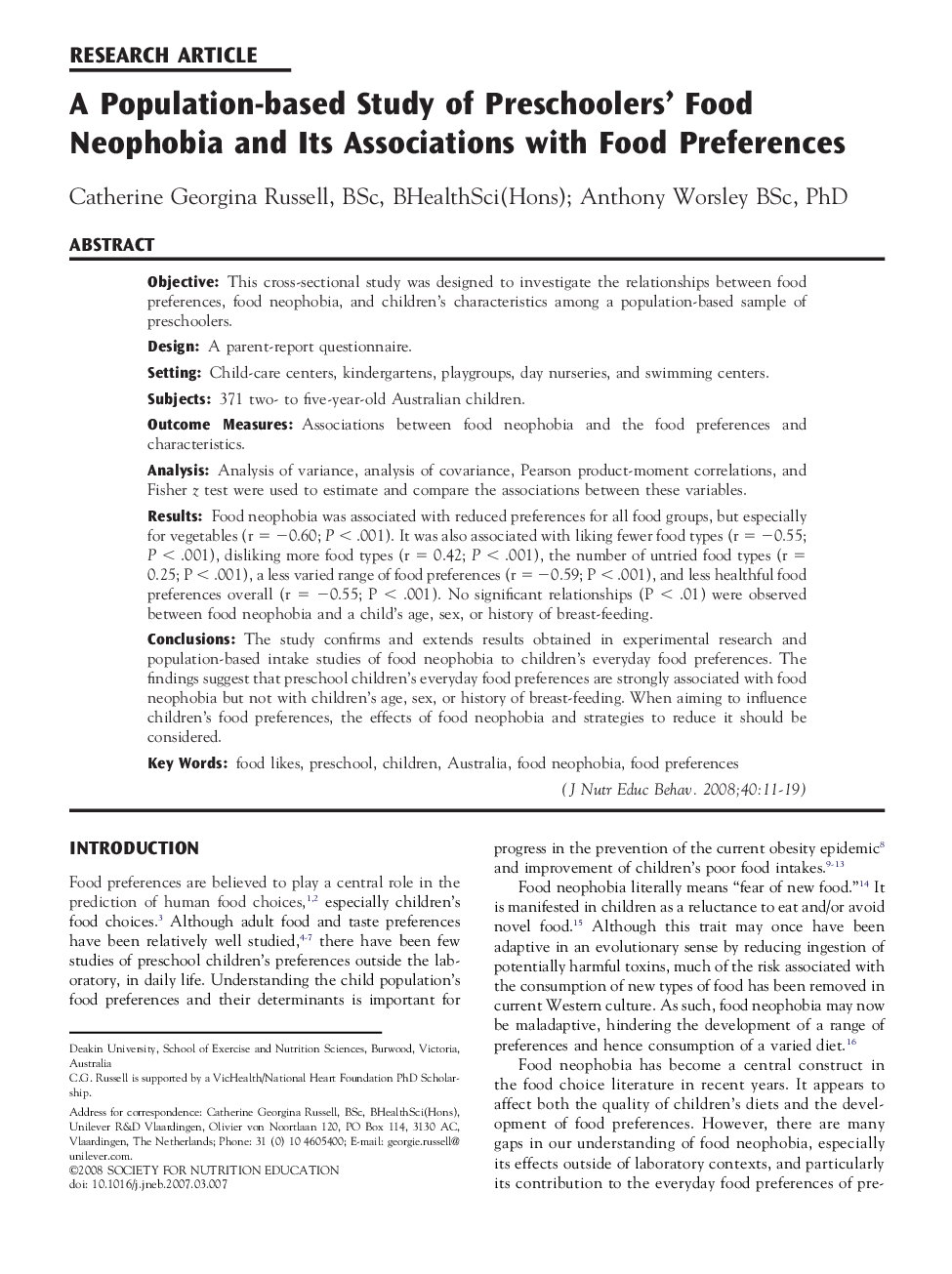| Article ID | Journal | Published Year | Pages | File Type |
|---|---|---|---|---|
| 362446 | Journal of Nutrition Education and Behavior | 2008 | 9 Pages |
ObjectiveThis cross-sectional study was designed to investigate the relationships between food preferences, food neophobia, and children’s characteristics among a population-based sample of preschoolers.DesignA parent-report questionnaire.SettingChild-care centers, kindergartens, playgroups, day nurseries, and swimming centers.Subjects371 two- to five-year-old Australian children.Outcome MeasuresAssociations between food neophobia and the food preferences and characteristics.AnalysisAnalysis of variance, analysis of covariance, Pearson product-moment correlations, and Fisher z test were used to estimate and compare the associations between these variables.ResultsFood neophobia was associated with reduced preferences for all food groups, but especially for vegetables (r = −0.60; P < .001). It was also associated with liking fewer food types (r = −0.55; P < .001), disliking more food types (r = 0.42; P < .001), the number of untried food types (r = 0.25; P < .001), a less varied range of food preferences (r = −0.59; P < .001), and less healthful food preferences overall (r = −0.55; P < .001). No significant relationships (P < .01) were observed between food neophobia and a child’s age, sex, or history of breast-feeding.ConclusionsThe study confirms and extends results obtained in experimental research and population-based intake studies of food neophobia to children’s everyday food preferences. The findings suggest that preschool children’s everyday food preferences are strongly associated with food neophobia but not with children’s age, sex, or history of breast-feeding. When aiming to influence children’s food preferences, the effects of food neophobia and strategies to reduce it should be considered.
